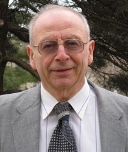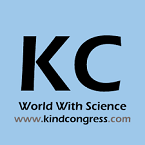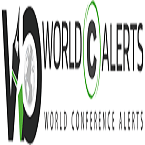Welcome Message
Dear Speakers, Delegates, Exhibitors & Sponsors,
On behalf of the Organizing Committee, it is our distinct pleasure to welcome you to the “4th World Congress on Plasma Chemistry and Plasma Processing”, taking place in Amsterdam, Netherlands on December 11–12, 2025.
This prestigious congress serves as a global platform for scientists, engineers, industrial technologists, and academic researchers dedicated to exploring the dynamic advancements and applications of plasma science and technology. The event offers a unique opportunity to engage with the latest breakthroughs in plasma chemistry, materials processing, energy systems, diagnostics, and industrial innovations.
Over the course of two exciting days, participants will benefit from keynote presentations, expert-led panel discussions, and interactive workshops delivered by internationally recognized pioneers in the field. The program will cover a wide range of topics—from plasma-assisted surface engineering and nanofabrication to environmental remediation and biomedical plasma applications.
We are confident that your participation will contribute to an enriching exchange of ideas and foster lasting collaborations within the international plasma community. We look forward to welcoming you to Amsterdam this December for an inspiring and future-focused experience at Plasma Chemistry 2025.
For any queries regarding the conference, please contact Ms. Lila Prescott, Program Coordinator.
With warm regards,
Organizing Committee
Plasma Chemistry 2025
About the Conference
Plasma Chemistry 2025 is pleased to invite researchers, technologists, industry experts, and policy makers from around the world to participate in the “4th World Congress on Plasma Chemistry and Plasma Processing,” scheduled for December 11–12, 2025, in Amsterdam, Netherlands. This global event will explore the emerging role of plasma science in shaping future technologies across environmental, energy, materials, electronics, and life science applications.
Theme: “Harnessing Plasma Innovations for a Sustainable Technological Future”
Plasma Chemistry 2025 will spotlight the most recent developments in low- and high-pressure plasma chemistry, advanced diagnostics, plasma modeling, surface modifications, and industrial-scale plasma systems. The conference aims to bridge theoretical plasma physics with applied plasma engineering to address both scientific challenges and real-world industrial needs.
The congress will feature in-depth keynote lectures, technical symposia, case-based discussions, hands-on workshops, and panel sessions on a broad spectrum of topics, including Plasma Catalysis, Biomedical Plasma, Environmental Decontamination, Plasma-Enhanced Thin Films, Plasma in Energy Storage, and Aerospace Propulsion.
As part of our ongoing support for emerging scholars, the event will include a Young Researcher Forum (YRF) where early-career professionals will present their innovative work and compete for Best Presentation, Best Poster, and Young Researcher Awards.
Why Attend?
-
Stay current on pioneering research, experimental techniques, and industrial advancements in plasma science.
-
Interact with global experts and leading research groups through a high-impact scientific program.
-
Learn about innovative plasma applications in energy, nanotech, biomedical, and environmental sectors.
-
Participate in technical workshops and network with industry leaders and technology providers.
-
Present your research, receive expert feedback, and contribute to shaping the future of plasma-based innovation.
Sessions and Tracks
This session explores how plasmas modify surface properties to improve adhesion, wettability, and corrosion resistance. Topics will include plasma etching, activation, and coating techniques on materials like metals, polymers, and ceramics. Advanced applications in aerospace, automotive, and medical devices will be discussed. Speakers will present insights into nano- and micro-scale surface modifications. Emphasis will also be placed on plasma-induced structural and chemical transformations. Plasma-polymer interfaces, bio-functional surfaces, and mechanical durability will be addressed. Attendees will understand how to tailor surface functionalities for specific applications using plasma. Emerging trends in environmentally friendly plasma treatments will be highlighted.
This session focuses on tools and techniques used to measure plasma properties in real time. Topics include optical emission spectroscopy, Langmuir probes, laser-induced fluorescence, and mass spectrometry. Presenters will explore electron density, temperature, ion energies, and species concentrations. Challenges in harsh environments and complex geometries will be discussed. New developments in time-resolved diagnostics and imaging methods will be introduced. Integration of diagnostics with control systems for industrial plasma reactors will be highlighted. Case studies will show how diagnostics influence process efficiency and safety. This track is essential for improving understanding and control of plasma behavior in research and production settings.
This session delves into non-thermal plasma technologies used at or near atmospheric pressure. Topics will include dielectric barrier discharges (DBD), plasma jets, corona discharges, and plasma torches. Applications in sterilization, agriculture, packaging, and surface treatment will be explored. Emphasis will be placed on the advantages of operating at ambient conditions without vacuum systems. Presenters will cover challenges in power control, gas chemistry, and plasma uniformity. Safety, cost-efficiency, and scalability will also be discussed. The session bridges theory and practice, providing insights into how cold plasmas are revolutionizing many low-cost and sustainable industrial applications.
This track investigates how plasma processes are used in the synthesis and modification of nanostructures. Topics include generation of nanoparticles, nanowires, quantum dots, and thin films. Emphasis will be placed on plasma-enhanced CVD, sputtering, and gas-phase nucleation methods. Presenters will highlight how plasma parameters affect morphology, uniformity, and functionality of nanomaterials. Applications in catalysis, biosensing, energy storage, and optoelectronics will be discussed. Researchers will also examine challenges in scale-up and process reproducibility. Advances in hybrid nanostructures and plasma-based doping techniques will be shared. The session fosters interdisciplinary innovation across nanotechnology and plasma chemistry.
Explore how plasma technology provides sustainable solutions for pollution control and waste treatment. This session covers plasma-assisted degradation of VOCs, NOx, SOx, and persistent organic pollutants. Case studies in water purification, air treatment, and soil remediation will be presented. Reactor designs including gliding arc and DBD systems will be evaluated. Emphasis will be placed on energy efficiency, reaction kinetics, and byproduct management. Presenters will address the integration of plasma with catalytic systems and biological processes. Environmental regulations and compliance challenges will be discussed. Plasma’s role in reducing industrial emissions and promoting green chemistry will be a focal point.
This session focuses on plasma-assisted deposition processes like PECVD, ALD, and magnetron sputtering. Presenters will discuss thin film formation mechanisms, deposition rates, and layer uniformity. Topics include coatings for solar cells, sensors, microelectronics, and protective barriers. Emphasis will be placed on adhesion, optical properties, and barrier performance. Speakers will also cover multi-layer structures and graded coatings. Plasma chemistry's role in tailoring surface energy and morphology will be highlighted. Industrial case studies will provide insights into scale-up and cost-effectiveness. Innovations in low-temperature film deposition and eco-friendly precursors will also be discussed.
Plasma medicine is an exciting frontier, and this session focuses on its use in wound healing, cancer treatment, and infection control. Presenters will examine cold atmospheric plasmas (CAPs) and their interactions with living tissues. Mechanisms involving reactive oxygen and nitrogen species will be discussed. Topics include plasma sterilization, dental applications, and dermatological therapies. Clinical safety, device design, and regulatory pathways will be addressed. Emphasis will be placed on personalized and minimally invasive treatment methods. Presenters will share clinical trial data and new medical device innovations. The session is ideal for bridging healthcare and plasma technology.
This session examines the fundamental chemistry taking place in plasma environments. Topics include electron-molecule interactions, ionization pathways, and radical formation. Presenters will explore kinetic modeling and species transport in low- and high-pressure plasmas. Discussions will include how plasma affects thermodynamics and catalysis. Applications in gas conversion, polymerization, and synthesis will be covered. Advances in diagnostics and computational simulations of plasma chemistry will also be discussed. Emphasis will be placed on the interplay between experimental data and theoretical models. This session provides a strong foundation for understanding the core reactions behind plasma applications.
This track covers plasma applications in the fabrication of integrated circuits and MEMS devices. Topics include dry etching, passivation, photoresist stripping, and atomic layer etching. Presenters will discuss challenges in achieving high precision and selectivity at the nanoscale. Advances in low-damage plasma processes for ultra-thin substrates will be highlighted. Plasma uniformity, contamination control, and etch profile accuracy will be addressed. The role of AI and real-time diagnostics in process control will be discussed. Attendees will gain insights into how plasma is enabling the next generation of micro- and nano-electronics.
Efficient reactor design is central to plasma processing success. This session features talks on fluid dynamics, electromagnetic field modeling, and energy coupling. Topics include RF, microwave, and pulsed DC reactors for both research and industrial settings. Presenters will explore how geometry, gas flow, and power parameters affect plasma behavior. Simulation tools and digital twins for reactor optimization will be discussed. Case studies in scale-up from lab to pilot and industrial reactors will be presented. Material compatibility, maintenance, and thermal management will also be addressed. Attendees will understand how to design reactors for stability and efficiency.
This session highlights how plasma can activate chemical reactions under mild conditions, supporting green chemistry goals. Topics include ammonia synthesis, methane reforming, CO? reduction, and hydrogen production using plasma. Presenters will explore plasma-catalyst interactions, reactor configurations, and energy efficiency metrics. Synergistic effects between excited plasma species and catalyst surfaces will be emphasized. Speakers will address catalyst stability, scalability, and selectivity control. Case studies in plasma-assisted chemical looping and hybrid reactors will be featured. The session promotes sustainable routes to produce fuels and chemicals using minimal environmental impact.
Plasma plays an important role in clean energy development. This session explores plasma-assisted hydrogen generation, synthetic fuel production, and plasma-enhanced combustion. Topics include biomass gasification, ammonia cracking, and CO? to methanol conversion. Presenters will share developments in plasma-integrated energy systems and battery material processing. Emphasis will be placed on reducing carbon emissions and maximizing energy yields. Novel reactor designs for high-throughput energy applications will be introduced. The session connects energy researchers and plasma engineers in building low-carbon energy solutions.
Plasma technologies are revolutionizing the aerospace sector. This session focuses on electric propulsion systems including ion thrusters, Hall-effect thrusters, and MPD accelerators. Presenters will discuss plasma plume diagnostics, thruster lifetime, and fuel efficiency. Topics also include thermal protection using plasma coatings and plasma-based reentry shielding. Advances in high-altitude plasma interactions and satellite propulsion will be covered. Emphasis will be placed on vacuum testing, space mission integration, and system modeling. Attendees will gain insight into plasma’s role in next-gen space mobility and aerospace safety.
This session explores how plasma enhances 3D printing and functional material production. Topics include plasma-assisted sintering, in-situ surface modification, and precision coating of 3D-printed structures. Presenters will discuss hybrid manufacturing systems combining plasma with laser or inkjet technologies. Smart materials such as stimuli-responsive polymers and conductive composites will be featured. Case studies in biomedical implants, aerospace parts, and sensors will be shared. Attendees will learn how plasma contributes to mechanical strength, chemical stability, and complex geometries in printed components.
This track dives into computational modeling and simulation of plasma systems. Topics include fluid dynamics, particle-in-cell (PIC) simulations, hybrid modeling, and plasma-material interaction models. Presenters will demonstrate how simulation supports reactor design, process control, and diagnostics interpretation. Emphasis will be on integrating machine learning and AI into predictive plasma modeling. Applications across PECVD, plasma etching, and plasma catalysis will be shown. This session supports collaboration between theorists, computational physicists, and process engineers. Attendees will explore how simulations accelerate innovation and reduce development cycles.
Cold plasma is emerging as a safe and sustainable tool in food and agriculture. This session covers plasma-assisted disinfection of food surfaces, pathogen inactivation, and packaging treatment. Presenters will also discuss seed sterilization, plant growth enhancement, and soil decontamination. Nutrient retention, shelf-life extension, and food quality improvements will be emphasized. Studies on microbial resistance and consumer safety will be reviewed. Challenges in regulatory approval, equipment scale-up, and economic feasibility will also be addressed. This session highlights how plasma supports global food security and sustainable farming practices.
Durable coatings are essential for protecting components in harsh environments. This session explores plasma spray, plasma electrolytic oxidation, and hybrid coating methods. Topics include barrier layers against corrosion, thermal barrier coatings for turbines, and biocompatible films for implants. Presenters will highlight adhesion mechanisms, wear resistance, and mechanical stability of plasma-coated surfaces. Advances in ceramic, composite, and metallic coatings will be shared. Emphasis will also be placed on in-service performance and field testing. This session is ideal for industries focused on surface longevity and asset protection.
This session focuses on how plasma modifies the surface and bulk properties of textiles and polymers. Topics include plasma-induced hydrophilicity, dye adhesion, flame retardancy, and anti-bacterial coatings. Low-pressure and atmospheric plasma treatments will be compared. Presenters will also explore environmentally friendly alternatives to traditional chemical processes. Case studies in medical textiles, packaging materials, and consumer goods will be shared. Emphasis on energy savings, chemical-free processing, and enhanced product functionality will be discussed. The session promotes sustainable practices in material manufacturing.
The Young Researcher Forum provides a dedicated platform for early-career scientists and graduate students. Participants will present their original research in oral and poster formats. Presentations will be evaluated by senior experts for clarity, novelty, and impact. Awards for Best Oral Presentation and Best Poster will be conferred. This track encourages active dialogue between emerging and established researchers. Mentorship, networking, and collaborative opportunities will be emphasized. It is a cornerstone of the congress’s mission to foster future plasma leaders. YRF promotes innovation, curiosity, and excellence in scientific exploration.
This visionary session explores where plasma science is headed. Topics include artificial intelligence in plasma control, quantum plasma physics, and ultra-fast diagnostics. Presenters will highlight emerging applications in photonics, biomedicine, and data storage. Discussions will also cover commercialization pathways, venture funding, and international collaborations. Breakthroughs in smart plasma systems and sustainability will be emphasized. The session concludes the congress by identifying grand challenges and future research directions. Attendees will leave inspired to contribute to the next generation of plasma-driven innovation.
This session explores how plasma technologies are applied across industries such as automotive, packaging, electronics, and biomedical manufacturing. Presenters will showcase real-world case studies of surface activation, cleaning, and adhesion enhancement. Topics include cost-efficiency, process integration, and automation using industrial plasma systems. Emphasis will be placed on challenges during upscaling, maintenance, and equipment standardization. Attendees will gain insights into supply chain coordination, customer adaptation, and quality control. Discussions will also focus on ROI, pilot plant transitions, and market readiness. Strategies for intellectual property protection and commercialization will round out the session.
Combining plasma with other physical and chemical methods can enhance processing outcomes. This session covers hybrid approaches such as plasma-photocatalysis, plasma-laser ablation, plasma-electrochemistry, and plasma-microwave systems. Presenters will discuss how hybrid systems achieve better energy efficiency, product selectivity, or control over material properties. Use cases in medical devices, environmental remediation, and energy storage will be highlighted. Topics will also include control systems, synchronization challenges, and safety protocols. Attendees will discover how integrating plasma with complementary technologies unlocks new capabilities in complex manufacturing environments.
This track focuses on plasma-assisted fabrication of advanced sensors, flexible electronics, and printed devices. Topics include plasma-enhanced patterning, nanostructuring, and functional surface modification for electronics. Presenters will cover emerging materials such as graphene, metal oxides, and organic semiconductors. Applications in IoT, biosensing, and wearable devices will be emphasized. Plasma’s role in enhancing conductivity, sensitivity, and long-term stability will be discussed. Attendees will gain insights into low-temperature fabrication processes and scalable manufacturing of smart electronic systems.
Plasma plays a vital role in next-generation solar cell production and energy harvesting systems. This session includes plasma-enhanced deposition of thin films, transparent conductors, and anti-reflective coatings. Topics cover silicon-based, perovskite, and organic PV technologies. Presenters will explore defect control, light trapping, and interface engineering. Emphasis will be placed on improving efficiency, durability, and production throughput. Commercial trends and breakthroughs in plasma-assisted PV manufacturing will also be shared. This session unites material scientists, physicists, and energy engineers toward sustainable energy solutions.
Plasma applications—especially in medicine, food, and environment—require compliance with strict safety and regulatory guidelines. This session addresses safety protocols, occupational exposure limits, and certification standards. Topics include device testing, emission monitoring, and product traceability. Presenters will explore ISO standards, CE marking, FDA clearances, and environmental compliance laws. Discussions will also include ethics in emerging applications and global harmonization of regulations. This track supports technology transfer from research labs to industry in a responsible, compliant manner. It’s essential for developers, manufacturers, and policymakers working with applied plasma systems.
Participation/Presentation Options
Oral presentation: Oral Presentations may include the topics from researches, theoretical, professional or private practices in a concise manner. Individuals with personal experience are also welcome to present personal experiences or narratives which help others in everyday life. Speakers with a 30-minute slot should plan to speak for 20-25 minutes, and Keynote speakers should plan to speak for 40-45 minutes, with the remaining time to be used for questions and discussion by the Session Chair.
Workshop: For workshop presenters also, the topic of the talk will be the same as an Oral presentation with more specialized techniques and detailed demonstration. The generalized time duration for a workshop presentation is about 45-50 minutes. Interested participants can join with their respective team and present the workshop with their research coordinators with special group waivers on registration
Poster presentation: Student Poster Competition will be organized at the Nutrition Science 2025 conference is to encourage students and recent graduates to present their original research. Presenters will be given about 5-7 minutes to present the poster including questions and answers. Judges may ask questions during the evaluation of the presentation. This is an opportunity for young scientists to learn about the recent findings of their peers to increase their capacity as multidisciplinary researchers. Poster displays will be in hard copy format of 1x1 M long.
For more details regarding Poster Presentation and Judging Criteria view Poster Presentation Guidelines.
Webinar: The webinar presentation is designed for those interested attendees who cannot join in person due to schedule conflicts or other obligations. In this option, the presenter may record the presentation and their presentation will be presented in the Webinar presentation session
E-Poster: e-Poster is also similar to the webinar presentation. In this session, their presentation will be published in the form of a poster in the conference website and the presenter abstract will be published in the conference souvenir and journal with DOI.
Exhibition: Showcase your products, services, and innovations at Plasma Chemistry 2025. We welcome exhibitors from cannabis pharma, research, cultivation, extraction, equipment, and healthcare sectors. Connect with global experts and industry leaders this November in Amsterdam.
To know more about exhibitor booth details and benefits visit WHY TO EXHIBIT WITH US?
Send your queries to plasmachemistry@conferenceinvitation.com
Advertisement: The conference program is a valuable resource that all attendees refer again and again as they navigate the conference. Advertising in the conference program is a great way to market and can help you secure long term business.
Send your proposal to plasmachemistry@conferenceinvitation.com to know the available advertisement options and prices
Sponsor Plasma Chemistry 2025
Premium Sponsorship package
Visa Process
Visa Guidelines for the 4th World Congress on Plasma Chemistry and Plasma Processing
Amsterdam, Netherlands | December 11–12, 2025
Planning to attend the 4th World Congress on Plasma Chemistry and Plasma Processing in Amsterdam, Netherlands? Here's a simple step-by-step guide to help you smoothly navigate the Schengen visa application process:
Complete your conference registration first. Once confirmed, you will receive an official Invitation Letter, which will be essential in supporting your visa application and justifying the purpose of your travel.
Most international participants will need a short-stay Schengen visa to enter the Netherlands. This visa allows you to stay up to 90 days for conference participation, business, or tourism.
Ensure that you gather all the required documents, which typically include:
· A valid passport (with at least 3 months’ validity beyond your return date)
· A completed visa application form
· Official invitation letter from the conference organizers
· Proof of flight bookings and accommodation arrangements
· Evidence of financial means (e.g., recent bank statements or income proof)
· Travel insurance with medical and repatriation coverage for the Schengen area
Schedule your appointment with the Dutch embassy or consulate in your country as early as possible. Peak travel seasons can lead to longer waiting times, so plan well in advance.
Visit the embassy or consulate with your complete documents. You may be asked about your travel purpose, intended stay duration, and ties to your home country to confirm your return after the event.
Visa processing generally takes 10 to 15 working days. Apply at least a month before your intended travel to avoid any delays.
Once approved, collect your passport with the visa affixed. Double-check the details and ensure you understand all entry requirements for the Netherlands before traveling.
Abstract Submission Criteria & Eligibility
The Organizing Committee of the “4th World Congress on Plasma Chemistry and Plasma Processing” invites researchers, technologists, scientists, engineers, and industrial experts to submit abstracts for presentation. We welcome submissions across all fields of plasma science, including plasma chemistry, material processing, surface engineering, nanotechnology, biomedical applications, energy systems, environmental remediation, and reactor design.
All presenting authors must complete their registration and are responsible for their own travel and accommodation. Upon abstract acceptance, presenters will receive an official Letter of Acceptance, which may also support visa applications. Accepted abstracts will be published in the Conference Abstract Book, which will be distributed to all registered attendees.
If the primary author is unable to attend, a co-author or qualified delegate may present on their behalf, but advance notice must be provided to the Organizing Committee.
Submission Options
We offer multiple presentation formats to accommodate diverse research and communication styles:
Presenters will deliver a 20–25 minute talk followed by 5–10 minutes of Q&A. Talks will be organized into scientific sessions based on thematic relevance.
Renowned experts in the field of plasma science will be invited to deliver 40–45 minute keynote talks, providing visionary insights and highlighting leading-edge innovations.
These 60-minute sessions will focus on practical applications, advanced research methods, plasma diagnostics, or industrial case studies, offering interactive components and demonstrations.
These collaborative 60-minute panels will address high-impact topics, featuring multiple speakers with short presentations followed by a moderated Q&A to promote audience engagement.
Market Analysis
The global market for plasma chemistry and plasma processing technologies is witnessing strong and sustained growth, driven by advancements in materials science, nanotechnology, healthcare, and energy systems. The increasing demand for environmentally friendly, energy-efficient, and precision-driven industrial processes has accelerated the adoption of plasma-based solutions across a wide range of applications.
As of 2024, the global plasma processing market—including equipment, systems, and services—was valued at approximately USD 18.7 billion. It is projected to grow at a compound annual growth rate (CAGR) of 9.5%, reaching USD 34.6 billion by 2030. This growth is being fueled by the expanding applications of plasma in semiconductor fabrication, surface treatment, thin-film deposition, biomedical devices, and environmental remediation.
-
Semiconductor and Electronics Industry: With continued miniaturization of microelectronic components and the rise of advanced packaging technologies, plasma etching and deposition have become critical to achieving high precision and yield in chip manufacturing.
-
Medical and Biomedical Applications: Cold plasma technologies are increasingly being adopted for sterilization, wound healing, cancer therapy, and the development of biocompatible coatings for implants and surgical instruments.
-
Green Manufacturing and Environmental Solutions: Plasma-assisted systems are replacing traditional chemical-intensive processes in industries such as textiles, food processing, and wastewater treatment, aligning with global sustainability goals.
-
Nanotechnology and Advanced Materials: Plasma plays a vital role in the synthesis and surface engineering of nanomaterials with precise structural and functional properties for applications in sensors, batteries, and drug delivery systems.
-
Energy Sector: Plasma is being investigated for hydrogen production, CO? conversion, and fuel processing, offering cleaner alternatives for power generation and fuel reforming.
-
Europe continues to lead in academic research and environmental regulations, promoting industrial-scale adoption of plasma processes—especially in Germany, the Netherlands, and France.
-
Asia-Pacific dominates the manufacturing sector, particularly in electronics, with high demand in countries like South Korea, Japan, and China.
-
North America has a strong presence in medical plasma technologies and R&D funding through both government and private sectors.
-
Researchers can explore interdisciplinary fields combining plasma science with bioengineering, photonics, and AI-driven control systems.
-
Industries will benefit from scalable, cost-efficient plasma systems for product development, material enhancement, and process innovation.
-
Startups and Investors are increasingly targeting niche plasma applications in health tech, green energy, and additive manufacturing.
-
Policy Makers and Regulatory Bodies are working to develop international safety standards and quality frameworks for plasma device certification and deployment.




























